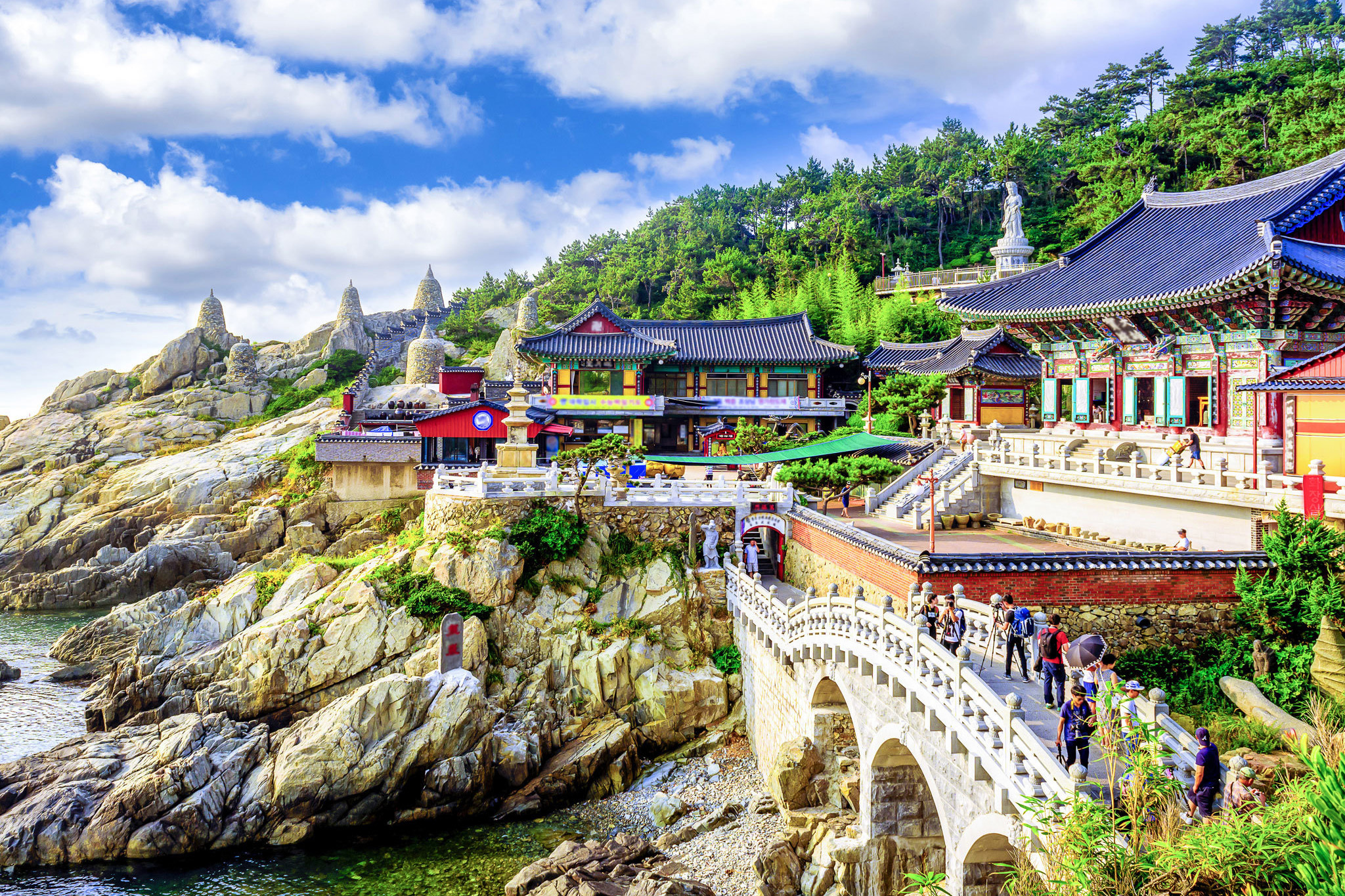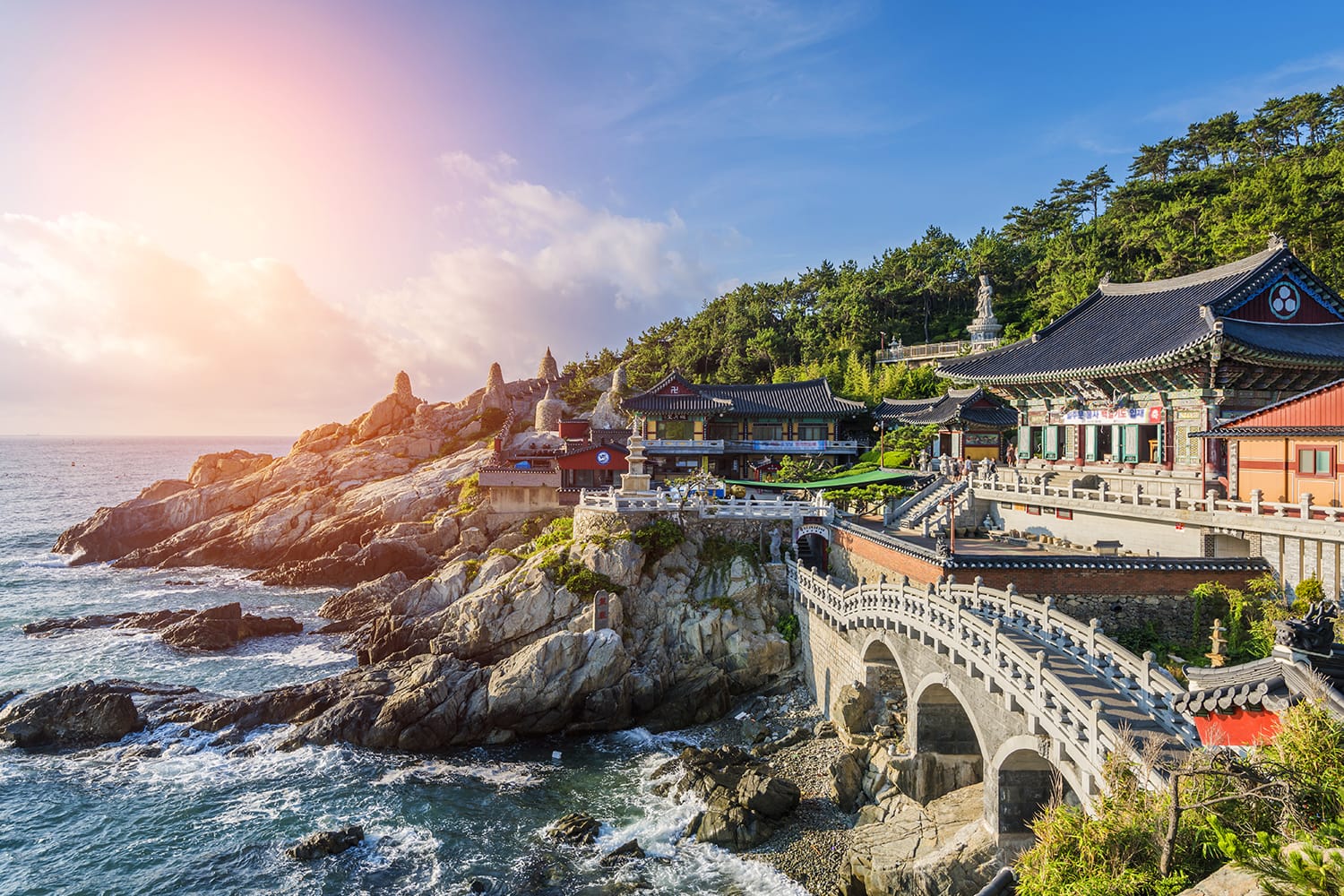
Busan, South Korea’s second-largest city, is a vibrant tapestry woven from the threads of rich history, breathtaking natural beauty, and a dynamic modern spirit. Nestled on the southeastern tip of the Korean peninsula, it’s a city that captivates with its sun-drenched beaches, towering mountains, bustling markets, and a unique cultural identity shaped by its port city status. Far from the frenetic pace of Seoul, Busan offers a refreshing blend of urban energy and coastal serenity, making it an increasingly popular destination for both domestic and international travelers.
This comprehensive guide will delve into the heart of Busan, uncovering its most captivating attractions, exploring its fascinating history, offering practical travel tips, outlining accommodation options, detailing transportation, and suggesting the best times to experience its charms.
A Glimpse into Busan’s Rich History

Related Articles about Busan: Where Mountains Meet the Sea – A Comprehensive Guide to South Korea’s Coastal Gem:
- Barcelona: A Traveler’s Guide to the City of Gaudí and Sunshine
- A Tapestry of Timeless Wonders: Unveiling the Best Hotels and Experiences in Uzbekistan
- Surabaya: A Vibrant Metropolis Where History Meets Modernity
- Aloha Spirit and Volcanic Wonders: Unveiling Hawaii’s Top Attractions
- Unveiling the Treasures of Greece: A Journey Through History, Beauty, and Culture
Busan’s strategic location has always made it a vital hub. Its history stretches back centuries, with evidence of settlements dating back to the Samhan period. During the Joseon Dynasty, it was a significant port for trade and fishing. However, its modern identity was profoundly shaped by the Korean War (1950-1953). As the capital shifted to Seoul and other cities fell under enemy control, Busan became the temporary capital and a refuge for millions of displaced Koreans. This period left an indelible mark on the city, evident in its vibrant, albeit sometimes makeshift, settlements that evolved into the colorful hillside villages we see today. The city’s resilience and spirit of survival are deeply ingrained in its character.
Top Attractions: Unveiling Busan’s Treasures
Busan boasts a diverse array of attractions catering to every interest, from cultural immersion to natural exploration.
1. Haeundae Beach: No visit to Busan is complete without experiencing the iconic Haeundae Beach. This sprawling stretch of golden sand is the city’s most famous landmark, buzzing with activity year-round. In the summer, it transforms into a lively playground for sunbathers, swimmers, and water sports enthusiasts. The surrounding area is dotted with luxury hotels, trendy cafes, seafood restaurants, and the iconic Haeundae Grand Hotel. Don’t miss a stroll along the Dongbaek Island promenade for stunning ocean views and the picturesque APEC House.
2. Gamcheon Culture Village: Often referred to as the "Machu Picchu of Busan," Gamcheon Culture Village is a whimsical labyrinth of brightly painted houses clinging to a steep mountainside. Once a poor shantytown, it has been transformed into an open-air art gallery and a vibrant cultural hub. Wander through its narrow, winding alleys, discover hidden art installations, quirky cafes, and enjoy panoramic views of the sea and the colorful rooftops. The village offers a unique glimpse into Busan’s creative spirit and its ability to reinvent itself.
3. Jagalchi Market: Immerse yourself in the sensory overload of Jagalchi Market, Korea’s largest seafood market. This bustling hub is a testament to Busan’s maritime heritage. Witness the vibrant display of fresh catches from the sea, from live octopuses to an array of colorful fish. You can even select your seafood and have it prepared on the spot at one of the many attached restaurants. The lively atmosphere, the calls of vendors, and the sheer abundance of marine life make Jagalchi Market an unforgettable experience.
4. Beomeosa Temple: Perched on the slopes of Geumjeongsan Mountain, Beomeosa Temple is one of Korea’s most important and ancient Buddhist temples. Founded in the 7th century, it exudes an aura of peace and tranquility. Explore its impressive architecture, serene courtyards, and admire the intricate Buddhist statues. The temple offers a welcome respite from the city’s hustle and bustle and provides opportunities for peaceful contemplation amidst natural beauty. The hike to the temple itself is also rewarding, offering scenic vistas.
5. Taejongdae Park: For breathtaking coastal scenery, head to Taejongdae Park, a natural park on the southernmost tip of Yeongdo Island. Dramatic cliffs plunge into the turquoise sea, offering spectacular views of the coastline and distant islands. Key highlights include the Observatory, the lighthouse, and the Sinseon Rock, rumored to be a resting place for mythical beings. You can explore the park by foot or take the Danubi train, a convenient way to navigate its various viewpoints.
6. Busan Tower and Yongdusan Park: Situated in Jung-gu district, Yongdusan Park is a beloved urban oasis, and its iconic Busan Tower offers panoramic views of the city and the harbor. Ascend to the observation deck for a bird’s-eye perspective of Busan’s sprawling cityscape, its mountains, and the vast ocean. The park itself is a pleasant place for a stroll, adorned with sculptures and seasonal flowers.

7. Gwangalli Beach and Gwangan Bridge: While Haeundae might be the most famous, Gwangalli Beach offers a more laid-back vibe and a spectacular nighttime vista. The star of the show here is the magnificent Gwangan Bridge, which illuminates the night sky with a dazzling display of lights. Enjoy a romantic evening stroll along the beach, dine at one of the many beachfront restaurants, and soak in the magical ambiance.
8. Busan Museum of Art: For art enthusiasts, the Busan Museum of Art showcases a diverse collection of Korean and international artworks, with a focus on modern and contemporary pieces. It’s a great place to appreciate the city’s thriving art scene and gain insights into artistic trends.
9. Songdo Skywalk: Experience the ocean from a new perspective at the Songdo Skywalk. This impressive walkway extends over the sea, offering stunning views of the coastline and the vibrant Songdo Beach area. It’s a perfect spot for a leisurely walk and some memorable photos.
Travel Tips for a Seamless Busan Adventure
- Currency: The currency is the South Korean Won (KRW). Credit cards are widely accepted in most establishments, but it’s always good to have some cash for smaller shops and markets.
- Language: The official language is Korean. While English is spoken in tourist areas and major hotels, learning a few basic Korean phrases like "Annyeonghaseyo" (Hello) and "Gamsahamnida" (Thank you) will be greatly appreciated.
- Connectivity: Pocket Wi-Fi devices are readily available for rent at airports and can be a lifesaver for navigation and staying connected. Many cafes and public spaces also offer free Wi-Fi.
- Etiquette: Koreans are generally polite and respectful. It’s customary to remove your shoes before entering someone’s home or certain traditional establishments. When dining, wait for elders to start eating first.
- Tipping: Tipping is not customary in South Korea.
- Safety: Busan is a very safe city with a low crime rate. However, always exercise common sense and be aware of your surroundings.
- Shopping: Beyond fresh seafood, Busan is known for its fashion, cosmetics, and local crafts. Explore the underground shopping malls, department stores, and traditional markets for unique finds.
Accommodation Options: Finding Your Perfect Stay
Busan offers a wide spectrum of accommodation to suit every budget and preference:
- Luxury Hotels: For a pampering experience, consider the five-star hotels in the Haeundae and Centum City areas, offering stunning ocean views, world-class amenities, and excellent service.
- Mid-Range Hotels: You’ll find numerous comfortable and well-equipped hotels throughout the city, particularly in areas like Seomyeon, Nampo-dong, and near major subway stations.
- Boutique Hotels & Guesthouses: For a more intimate and unique stay, explore the charming boutique hotels and guesthouses, especially in areas like Gamcheon Culture Village or near the beaches.
- Hostels: Budget travelers will find a good selection of clean and friendly hostels, offering dormitory beds and private rooms, perfect for meeting fellow travelers.
- Airbnb: For longer stays or those seeking a more local experience, Airbnb offers a variety of apartments and rooms across the city.
Getting Around Busan: Navigating the City with Ease
Busan’s public transportation system is efficient and well-connected, making it easy to explore the city:
- Subway: The Busan Metro is the most convenient way to travel between major attractions. It’s clean, punctual, and covers most of the city. Purchase a T-money card for easy tap-and-go payment.
- Buses: An extensive bus network complements the subway system, reaching areas not directly served by the metro. Bus routes can be a bit complex, so using navigation apps is recommended.
- Taxis: Taxis are readily available and are a good option for shorter distances or when traveling with luggage. They are generally affordable.
- KTX (Korea Train eXpress): If arriving from other cities in South Korea, the KTX high-speed train is the fastest and most comfortable option. Busan Station is a major hub.
- Walking: Many areas, like Gamcheon Culture Village or along the beaches, are best explored on foot to truly soak in the atmosphere.
Best Time to Visit Busan: Embracing the Seasons
Busan experiences four distinct seasons, each offering a unique charm:
- Spring (March – May): This is arguably the most pleasant time to visit. The weather is mild and sunny, with blooming cherry blossoms and azaleas painting the city in vibrant colors. It’s perfect for outdoor exploration and enjoying the beaches before the summer crowds arrive.
- Summer (June – August): Summer in Busan is synonymous with beach season. The weather is warm and humid, with occasional rain showers. Haeundae and Gwangalli beaches are at their liveliest, filled with locals and tourists enjoying water activities. Be prepared for crowds and higher accommodation prices.
- Autumn (September – November): Another excellent time to visit, autumn offers crisp air, clear skies, and beautiful fall foliage. The temperatures are comfortable, making it ideal for hiking in the mountains and exploring the city’s cultural sites. The Busan International Film Festival (BIFF) also takes place in October, attracting cinephiles from around the world.
- Winter (December – February): Busan experiences milder winters compared to inland cities, with occasional snow. While it might be too cold for extensive beach activities, the city still offers plenty to see and do, from cozy cafes to indoor attractions. The city is less crowded during this period, and accommodation prices are generally lower.
Conclusion:
Busan is a city that truly has it all – from its captivating beaches and majestic mountains to its rich historical tapestry and vibrant modern culture. Whether you’re seeking relaxation, adventure, cultural immersion, or culinary delights, Busan promises an unforgettable experience. By understanding its history, planning your itinerary with its top attractions in mind, and utilizing the practical travel tips provided, you’re well on your way to discovering the magic of this dynamic coastal gem. So pack your bags, embrace the spirit of adventure, and let Busan charm its way into your heart.





